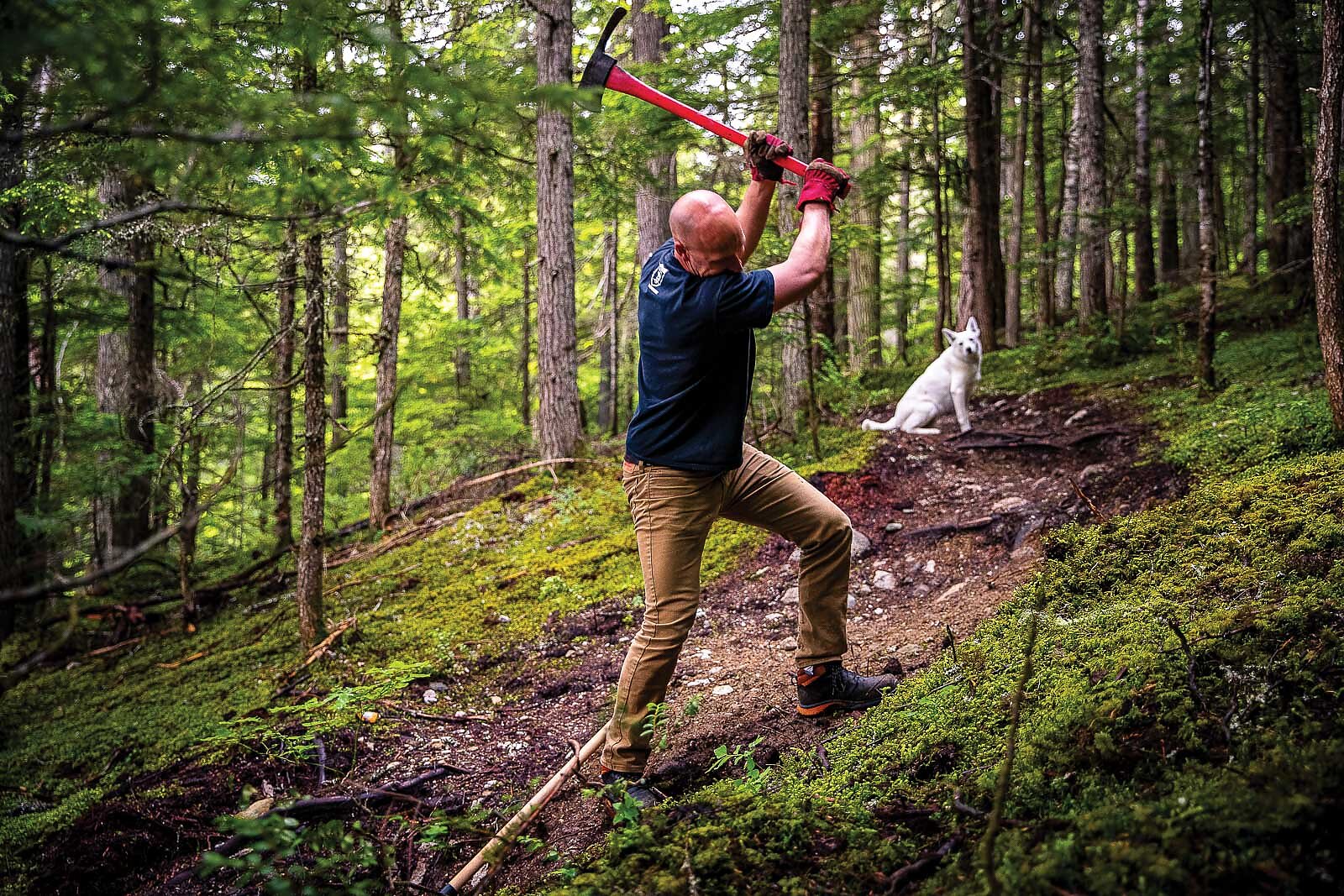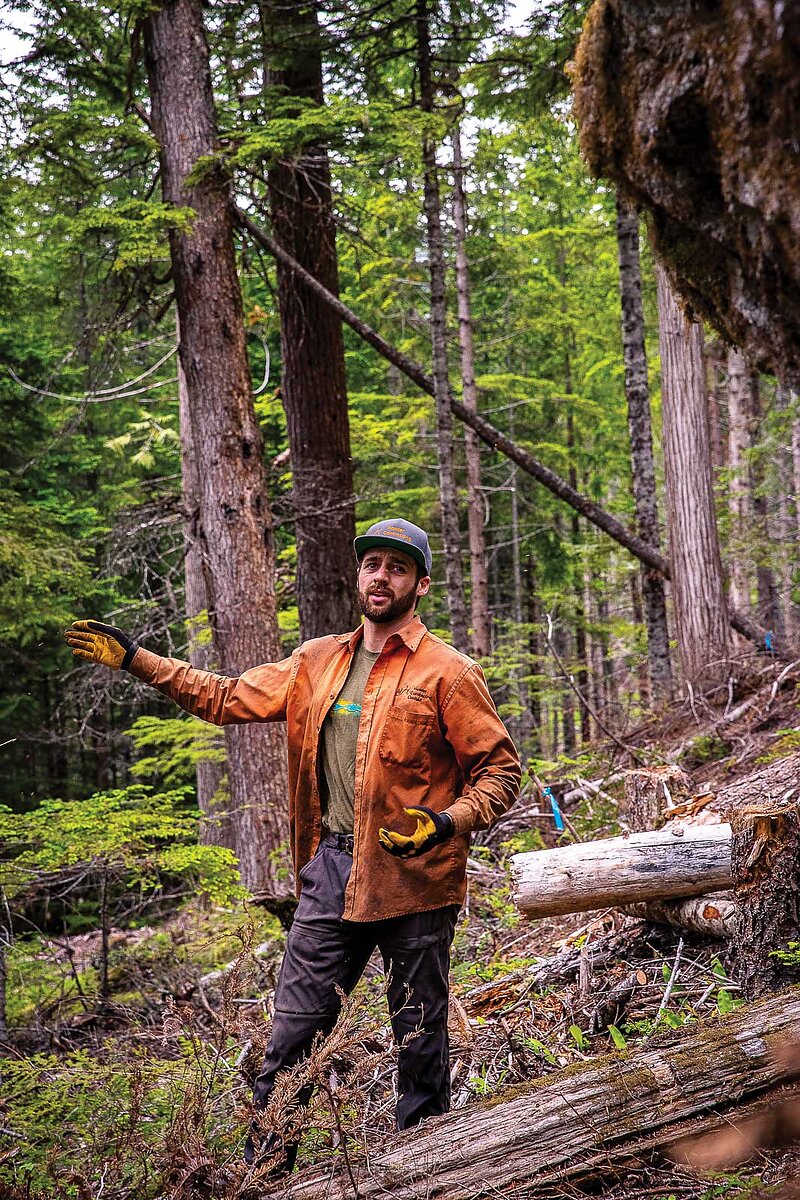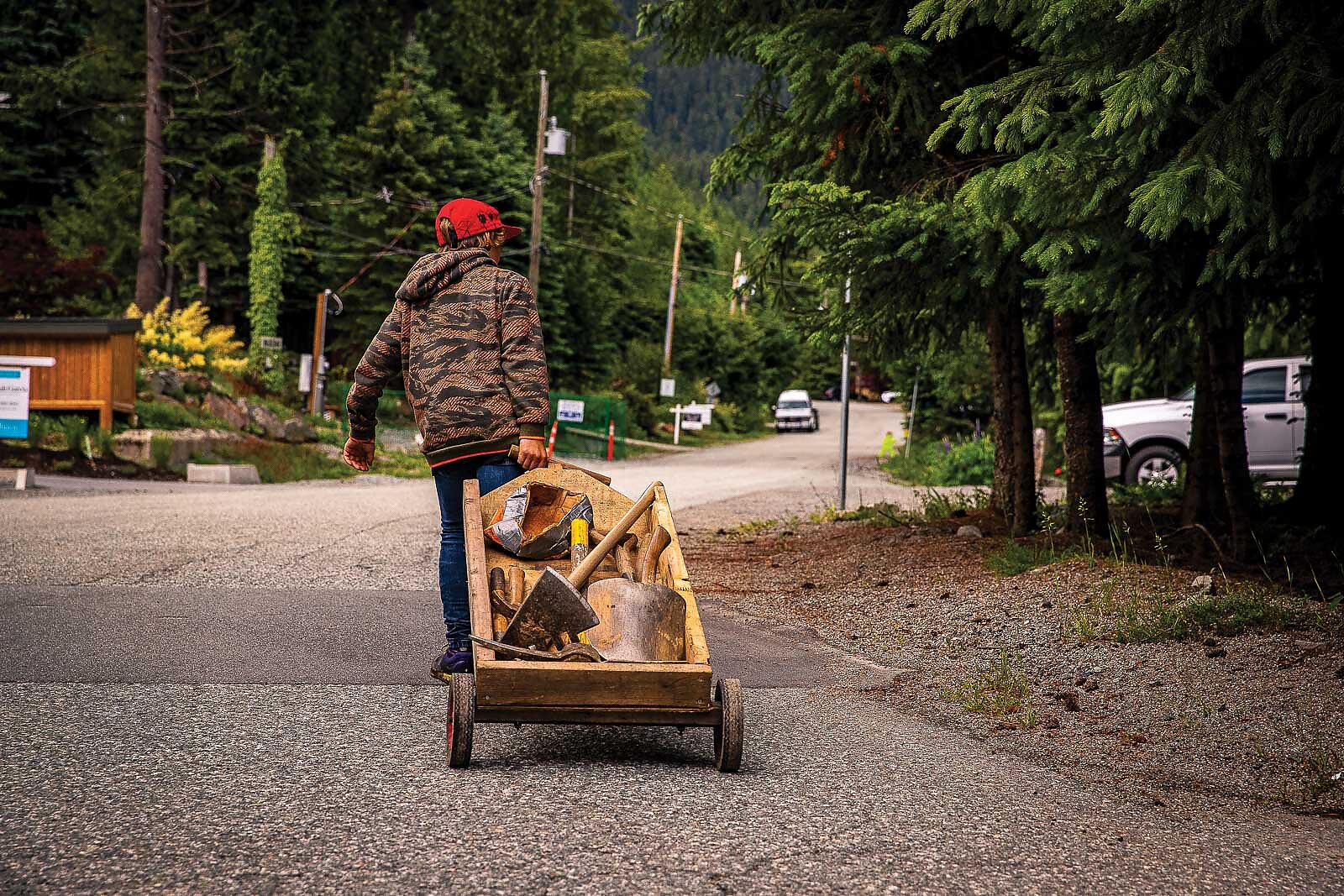
The 2020 Canadian Extreme Recreation Boom Whistler, BC's Workforce of Unemployed Trailbuilders
Words by Quinn Lanzon | Photos by John Entwistle
When the coronavirus pandemic hit Whistler in March 2020, it was like a cross-check to the teeth.
Overnight, the town’s economic lifeblood of destination tourism screeched to a halt, and paychecks disappeared soon after. The ski resort closed two months early. Nonessential businesses were shuttered. Hundreds of people picked up and left. It went from full-on harvest season to ghost town, real quick.
The Canadian government responded fast and many locals began collecting Canadian Emergency Response Benefit (CERB) checks, though there wasn’t much to do besides self-isolate and wait for the snow to melt. So, as the roaring engine of Whistler idled quietly in the fog of a wet spring, a workforce of local trailbuilders fired up their own industry in the woods.
Trails, pumptracks and dirt jump spots throughout the valley were revamped in the spring of 2020 like never before, thanks, in part, to CERB money. With cash coming in and no day jobs to attend, an impressive number of people began spending their days in the woods. Whether they are a full-time builder, legendary digging dad, elusive Frenchman or 11-year-old kid, it seems some people in the valley choose to build their way through difficult times.
“If you’re going to be a trailbuilder, you have to enjoy being by yourself in the woods,” Zander Strathearn said early one morning as we chucked brush from a corridor he’d recently cut. Though he’s originally from Toronto, Strathearn has worked as a builder in Whistler since starting with the mountain’s Bike Park trail crew in 2010. Over the years, he’s made a name for himself with builds like Howler, Zanarchy and LESS. Even though building is his full-time career, he still makes time for volunteer work, often running his mini excavator at his own expense.


“When you think about it,” Strathearn says, “most trailbuilders are around the same age. We all grew up mountain biking at a time when, if you wanted to ride something, you had to build it yourself. The kids who grow up now just don’t have the same need to dig. The next generation is going to have to actively choose to build stuff for themselves and that’s just not a popular thing to do.”
But it seems the change of pace imposed by COVID-19 has the potential to inspire today’s youngsters to pick up the tools. There’s rumor of a kid who’s been wheeling a cart of tools into the woods all on his own. Despite his observations about the generation gap, Strathearn seems hopeful.
Scott Veach, the builder of legendary lines such as Miss Fire and Dark Crystal (DC), has his own take on Whistler’s trail renaissance this spring. “It’s almost like people are realizing that it’s OK not to go and ride every day—that building is rewarding too,” he says. Veach built DC with his friend Ben Haggar during his own flirtation with unemployed life in 2015. Today, the father of two works for Whistler-based company Ride Wrap and still spends more time digging than riding.
“It’s funny how some builders make trails and then don’t want people to ride them,” Veach says. “I like seeing people ride DC. It’s a great trail. But trails change. They get beat up. They need maintenance.”

As one of the most popular and heavily trafficked trails in Whistler, Dark Crystal routinely sees hundreds of riders a day and requires constant work. Haggar and Veach have managed to harness DC's popularity to mobilize volunteers for maintenance and make a concerted effort in partnership with the Whistler Off Road Cycling Association to limit traffic in wet weather. Because when you have a family and full-time job, trail work is a slow burn—nothing happens fast.
Mark Taylor and Will Cadham, itinerant trail stewards known as the Free Radicals, had a spring of international travel canceled. But being the good lads they are, they spent more than a week working on DC, doing the unglamorous maintenance job of filling holes and lugging buckets all day long.
“Maintenance isn’t sexy,” Cadham says. “New trails are sexy. But maintenance is usually the answer.”
There’s a Frenchman in town, though, who devotes his days to making maintenance sexy. As a new-yet-dedicated fixture of Whistler’s dirt jump and pumptrack scene, Jolan Perrotin has put thousands of hours into maintenance. True to his roots building dirt jumps in France, Perrotin is a “shaper” first and a rider second. His craft and dedication to digging are his connection to a solid part of a notoriously fluid community.
“It costs so much money to come here. You’re here to ride,” he says. “Why would you dig? You have WORCA for the trails, Joyride for the river jumps, the muni’ for the other trails and then the bike park. People here take it for granted that there’s trails and they just focus on riding.”
For a relative newcomer, Perrotin is an oddity: He hardly rides. He’s great at rallying people around new projects, sharing photos with other builders on Instagram and keeping in touch with anyone who wants to move dirt. In his commitment to his craft, Perrotin is building more than jumps—he’s building community.


As much as Whistler is a transient place, there is an established community of long-term residents. Carter Durlacher is of a rare breed, one of the few to be raised in Whistler (children aren't delivered in Whistler, so he was born at the hospital in Squamish). And after spending five minutes with the ultra-focused 11-year-old, it’s apparent this place runs deep in his veins.
Instead of just riding the hundreds of options in town, Durlacher has chosen to build things for himself. The reason is pretty simple. “I just like building,” he says. “I want to make something that I want to ride.”
Durlacher speaks and moves through the forest with a clear devotion to his vision for what his trail will be. Durlacher’s dad, Ken, revealed that his son has a five-week building schedule, with specific deadlines he is committed to meeting. This kid means business. COVID-19 meant Durlacher didn’t have to attend school in person and taking classes online freed him up to spend more time making something for himself and honing his skills as a builder. Durlacher is an example of the next generation’s approach to building trails, one rooted less in necessity and more in expression. As members of an older guard, we can be quick to judge what we don’t understand—maybe we’ve got the next generation all wrong.
Pedaling through Whistler on the Valley Trail cycling path is where the winds of change in the building community are most obvious. New jumps are everywhere, new cut lines and fly-out airs dot the whole valley. This spring, new free time created outlets for energy and the result is new places to ride our bikes, built by every generation and type of rider, each with a unique interpretation of the ground and definition of a good time.
At the end of the day, there’s no such thing as a bad trail. If you build it, it’s yours—your idea brought to life and shared with the world. And, if people don’t like it, they can build their own damn trail.